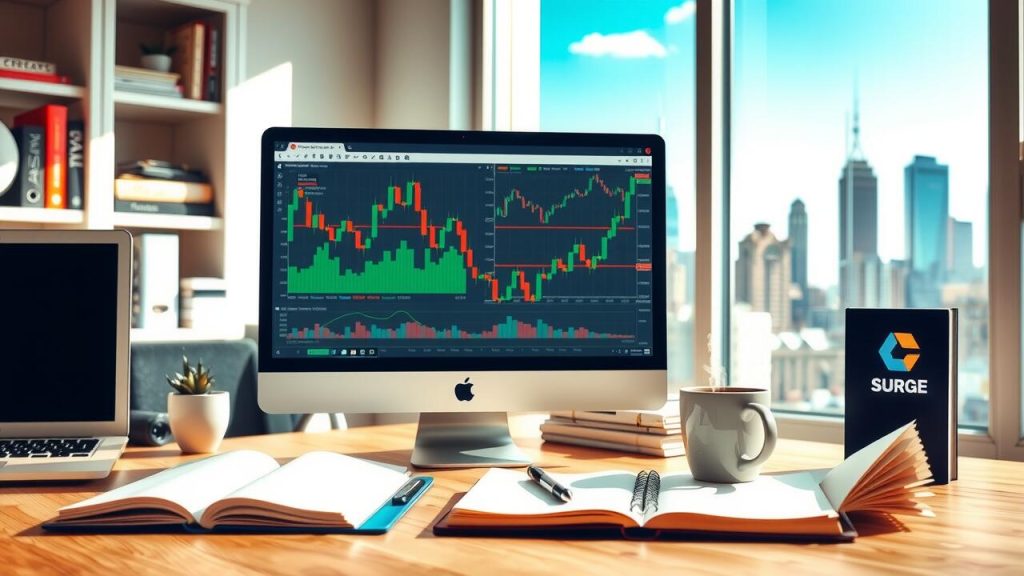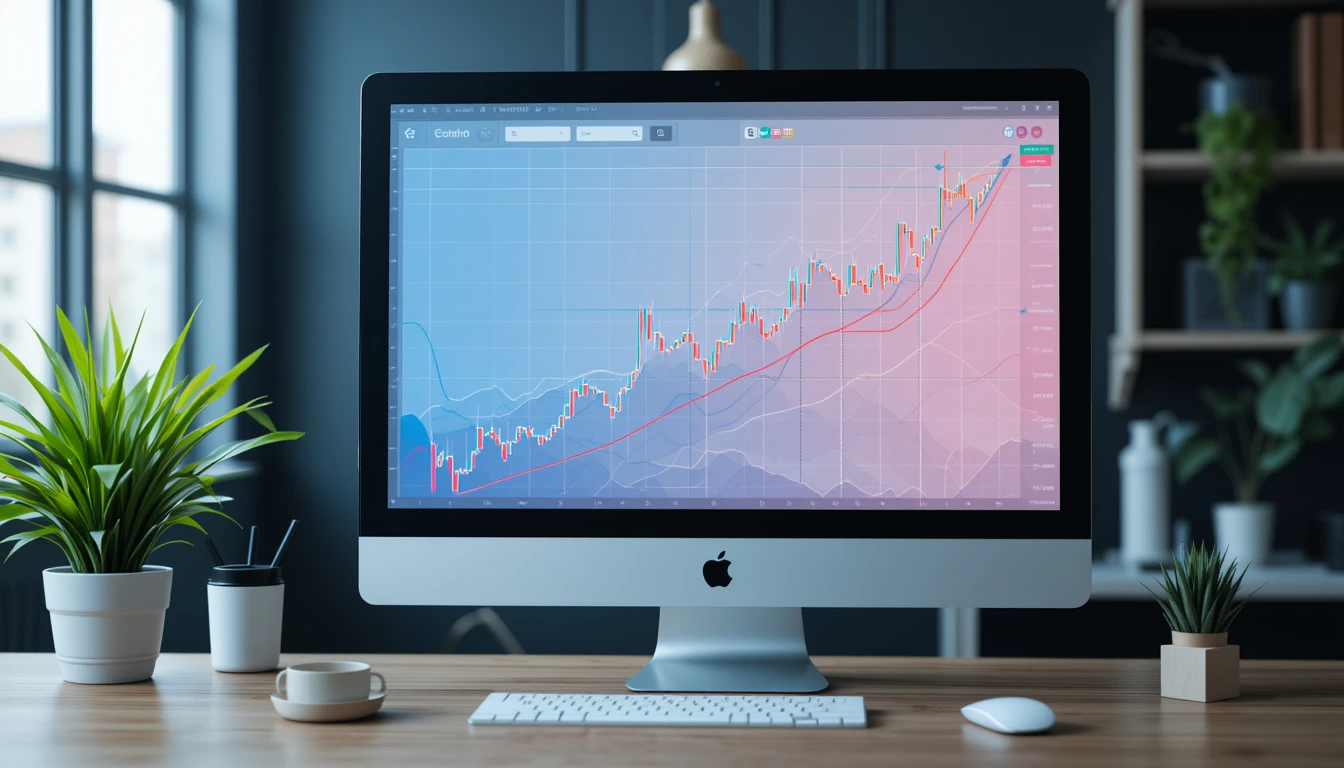
Managing Leverage in Trading: A Comprehensive Guide for New Traders
Leverage is a powerful but double-edged sword in trading. It allows you to control a large position with a relatively small amount of capital, amplifying both potential gains and potential losses2. For example, using 10:1 leverage means a 1% move in the market results in a 10% change in your position’s value. While this can turn even small price moves into meaningful profits, it can just as quickly multiply losses and even wipe out your account if not managed carefully2. This guide provides a detailed look at strategies and best practices for using leverage effectively, with practical examples of how leverage works, the risks involved, and actionable advice on minimizing exposure to market volatility. New traders will learn how to harness leverage as a tool for growth while protecting their capital through robust risk management techniques.
Understanding Leverage and Its Effects
What Leverage Means: Leverage in trading is essentially borrowed capital that increases your market exposure beyond your cash balance. It’s expressed as a ratio (e.g. 10:1 or 50:1) indicating how large a position you can control with your own money. For instance, 10:1 leverage (also written as 10×) lets you trade a $10,000 position with just $1,000 of your own funds3. The remaining amount is provided by the broker (on margin). A small portion of your funds is held as margin, a security deposit to cover potential losses. Different markets offer different maximum leverage: forex brokers often allow 30:1 or higher (sometimes up to 100:1) because major currencies tend to move only fractions of a percent per day6. Highly volatile assets like cryptocurrencies usually come with much lower leverage limits (e.g. 2:1 or 3:1 for retail traders) due to their large price swings. The key point is that leverage multiplies the size of your trade, so even minor market movements have an outsized effect on your trading account.
Amplified Profits and Losses: Because leverage magnifies your position size, it boosts both upside and downside outcomes. This can be illustrated with a simple example. Suppose you have an account with $1,000 as trading capital:
No Leverage (1:1): You use $1,000 to buy a stock or currency. If the price moves ±5%, your position value changes by ±$50, which is ±5% of your capital (direct one-to-one impact).
Moderate Leverage (10:1): You control a $10,000 position with your $1,000 (the rest is borrowed). Now a 5% market move results in a $500 change in your position value – which is 50% of your $1,000 capital. A 5% rise yields a 50% gain (+$500), but a 5% drop means a 50% loss (–$500).
High Leverage (20:1): You control $20,000 with $1,000. The same 5% move would swing your position by $1,000, which is 100% of your capital. In other words, a 5% adverse move would wipe out your initial $1,000 investment completely. In fact, with 10:1 leverage, even a 10% market decline can result in a 100% loss of capital.
To summarize these outcomes:
Leverage Ratio Position Controlled (with $1,000 capital) +5% Price Move (Profit) –5% Price Move (Loss)
1:1 (No leverage) $1,000 +$50 (+5%) –$50 (–5%)
10:1 $10,000 +$500 (+50%) –$500 (–50%)
20:1 $20,000 +$1,000 (+100%) –$1,000 (–100%)
As the table shows, higher leverage dramatically increases the percentage impact on your account equity for a given price change. This is why leverage is often called a “double-edged sword”. It provides the opportunity to earn high returns on a small account when trades go in your favor, but it also exposes you to the risk of equally large losses if trades go against you5. New traders must clearly understand this amplification effect before using leverage.
Margin Requirements: Another way to look at leverage is by the margin requirement set by your broker. Margin is the percentage of the total trade value that you must put up from your own funds. There’s an inverse relationship: the higher the leverage, the lower the required margin. For example, a 50:1 leverage (common in forex) means you must deposit 2% of the position’s value as margin. At 100:1 leverage, the margin requirement is just 1%. Extremely high leverage like 200:1 or 400:1 corresponds to margin of 0.5% or 0.25%, respectively. The table below shows a few typical ratios:
Leverage Ratio Margin Required (of total position)
5:1 20% (1/5 of position)
10:1 10% of position
50:1 2% of position
100:1 1% of position
200:1 0.5% of position
400:1 0.25% of position
In practice, if you wanted to open a $100,000 trade at 50:1 leverage, you would need $2,000 margin (2%). At 100:1 leverage, only $1,000 margin is needed for the same $100,000 position. While lower margin requirements make it easier to enter big trades with limited capital, they also mean you have less of a buffer before losses mount. If losses exceed your posted margin, you can quickly face a margin call or forced liquidation (the broker closes your position to prevent further losses)4. Understanding margin is critical: it’s the safety cushion that prevents you from losing more money than you have. Many brokers and regulators now offer negative balance protection, ensuring you cannot lose more than your account balance, but you should verify this feature. Without it, using extreme leverage can put you in debt to your broker if a market moves violently against you.
Real-World Example: To drive home the point, consider the famous case of the Swiss Franc shock in January 2015. The Swiss National Bank unexpectedly removed its currency peg to the Euro, causing the Swiss franc (CHF) to surge about 20% in a single day. Such a move was nearly unprecedented for a major currency. Traders who were heavily leveraged in forex positions (short CHF) were devastated – many saw their entire accounts erased in moments, and some even ended up owing money because their losses exceeded their account balance. Brokers themselves suffered large losses due to client accounts going negative. This event underscored that even “low-volatility” markets can experience extreme swings, and anyone over-leveraged in the wrong direction can be ruined. It’s an extreme example, but it highlights why you must use leverage cautiously and always be prepared for the unexpected. Market volatility can spike without warning, and leverage will magnify its impact on your finances.
The Risks of High Leverage and Volatile Markets
Before delving into best practices, it’s important to recognize the specific risks associated with misusing leverage, especially for new traders. Many beginners are lured by the prospect of large gains and either ignore or underestimate these dangers:
Magnified Losses: Just as leverage amplifies small price movements into big profits, it also means small adverse moves cause big losses2. A trade that moves 1-2% against you can easily equate to a 10-20% loss of your entire capital at high leverage. Without strict risk controls, a single trade can wipe out months of gains or even your whole account. Data shows that around 70–80% of retail traders lose money overall, and one major factor is over-leveraging trades such that normal market fluctuations become catastrophic. In forex trading, which commonly offers high leverage, loss rates have been reported as high as 80–90% for retail traders. This grim statistic underscores how dangerous improper leverage use can be.
Market Volatility: Leverage is especially risky in volatile markets. Volatility refers to how quickly and sharply prices move. When volatility is high, price swings can be sudden and dramatic. If you’re highly leveraged during a volatile period (for instance, around major news announcements or in inherently volatile assets like crypto), you might be hit with whipsaw moves or price gaps that trigger large losses before you can react13. Volatile markets can also lead to wider bid-ask spreads and slippage (getting filled at a worse price than expected), which further harms leveraged positions. In short, the higher the volatility, the lower your effective tolerance for leverage should be13. New traders often underestimate volatility risk – they might use high leverage in calm conditions, only to be caught off guard when the market suddenly becomes turbulent.
Margin Calls and Liquidation: Using leverage means you always have to mind your margin level. If the market moves against you enough that your account equity falls below the required margin, the broker will issue a margin call, demanding you deposit more funds. If you don’t (or can’t) quickly add capital, the broker will start closing your positions to limit further losses. This is called liquidation. For example, a trader using 100:1 leverage could be forcefully liquidated by the broker on a tiny 1% unfavorable move if they have no extra free margin8. This risk is ever-present when trading on margin. Proper risk management aims to ensure you never get near a margin call, because by that point your account is already in severe trouble. Always remember: the broker’s first priority is protecting itself. If your positions are too large for your account size, they will be closed out at the worst possible time (when you’re deeply in the red). Avoiding this scenario is a top priority when managing leverage.
Emotional Stress and Psychology: High leverage not only affects your account balance, it also takes a psychological toll. The stress of seeing large swings (profits turning to losses in minutes, or vice versa) can lead to emotional decision-making. Fear and greed are amplified. For beginners, this can result in panic selling, impulsive trade entries, or “revenge trading” after a loss, all of which typically make outcomes worse. The pressure of knowing that one mistake could blow up your account can be debilitating and can cause traders to abandon their strategies. Thus, part of learning to handle leverage is also building the discipline and emotional control to stick to your risk management plan amid volatility. If you find that using a certain leverage level causes you undue stress or sleepless nights, it’s a sign that leverage is too high for your comfort – scale it down.
Undercapitalization: A common mistake is starting with too little capital and then using high leverage to “make it worthwhile.” Many new traders open accounts with minimal deposits (say $100 or $500) and then use the maximum leverage offered in hopes of earning fast profits. The reality, however, is that a small account combined with high leverage is extremely fragile – even tiny market moves can trigger a margin call. Undercapitalized traders have no room for error, and trading then becomes more akin to gambling. It’s generally safer to trade smaller (or even use a demo account) until you can fund your account to a reasonable level to support the positions you want to take with low or moderate leverage. Remember that leverage does not change the odds of a trade’s success; it only changes the impact on your balance. If your strategy isn’t profitable, leverage will just make you lose money faster. No amount of leverage can compensate for a lack of trading edge or experience.
Key Takeaway: Respect the risks that come with leverage. Many experienced traders advise treating trading with high leverage as if you’re “handling dynamite.” It can be useful in skilled hands with proper precautions, but careless use can be explosive to your finances. Regulators in many regions have enforced leverage limits (for example, retail traders in the U.S. are limited to 50:1 in forex, and in the EU, 30:1 for major forex pairs and less for riskier assets) specifically to protect inexperienced traders from the most dangerous levels of leverage. As a new trader, it’s wise to voluntarily limit yourself even further. In the next section, we outline concrete best practices and strategies so you can use leverage to your advantage while containing the downside.
Best Practices for Managing Leverage Effectively
To trade safely with leverage, risk management is paramount. Below are essential strategies and best practices that every new trader should follow to use leverage wisely and minimize the chance of large losses. These practices are drawn from the experiences of professional traders and the common pitfalls that trip up beginners:
Start with Low Leverage: Begin conservatively. It’s strongly recommended that new traders stick to low leverage ratios initially – for example, 5:1 or 10:1 at most3. Lower leverage means you are trading smaller relative to your account size, which reduces risk. With a 5:1 leverage, a 1% market move affects your capital by 5%. This is a manageable way to learn how leverage impacts your trades. As you gain experience, you might gradually increase leverage, but do so slowly and only if your risk management remains solid3. Many seasoned traders actually continue to use relatively low leverage – just because a broker offers 100:1 or higher doesn’t mean you should use it all. Remember that survivability in trading is more important than quick profits. Using minimal leverage (or even no leverage initially) allows you to survive the inevitable learning mistakes. Example: If you have $2,000, trading one small forex lot (which might be ~$10,000 position) is roughly 5:1 leverage. A 50 pip move (0.5%) would cost you ~$50, or 2.5% of your account – not pleasant, but not ruinous. If instead you used 50:1 leverage ($100,000 position on that $2,000), the same pip movement would be a $500 loss (25% of your account). Starting small gives you breathing room to make mistakes and learn from them16.
Always Use Stop-Loss Orders: A stop-loss is a predetermined exit price that cuts off a losing trade automatically. It is an absolute must when trading with leverage14. Without a stop-loss, a leveraged position can spiral into a massive loss. Place your stop-loss at a level that limits your loss to a tolerable amount – common guidance is to risk no more than 1-2% of your trading capital on any single trade2. This 1-2% risk rule means even if the trade hits the stop, you only lose a tiny portion of your account, which you can recover from. Determine your stop placement based on analysis (for example, below a support level or a certain percentage away) and position size such that the loss at that stop is within your 1-2% risk limit. Make it a habit that every trade entry is accompanied by a stop. This removes emotional decision-making if the market moves against you17. It also prevents the destructive behavior of “holding on and hoping” as losses grow. For added protection, consider using trailing stops (which automate profit-taking by moving the stop as price moves in your favor) once a trade is profitable. But at minimum, have a fixed stop-loss on every position. As one trading manual put it, “the stop loss will save you 99.99% of the time” – it’s your insurance against catastrophe.
Limit Your Risk per Trade (Position Sizing): Before entering any trade, calculate how much of your account you are putting at risk. This depends on both the stop-loss distance (in % or pips) and your position size. Use the 1-2% rule for risk per trade2. For example, if you have a $5,000 account, 2% risk is $100. If your stop-loss on a certain trade is 5% away from entry, you should risk $100 at most, meaning your position size should be $2,000 (because 5% of $2,000 is $100). If that position size is smaller than what leverage would allow, so be it – trade small. Proper position sizing ensures that no single trade – no matter how strongly you feel about it – can cause devastating damage. Many new traders instead do the opposite: they risk a huge chunk of their account on one “sure bet” and then lose half their account on a normal losing trade. Position sizing and leverage go hand in hand: The higher the leverage you use, the smaller your position size should be relative to your total funds (to keep the dollar risk constant). A good practice is to calculate position size using a position size calculator or formula before every trade, considering your stop distance and desired risk. This way, you control how much of your capital is truly at stake, regardless of the leverage available17. To illustrate, a disciplined trader with a $10,000 account might decide: “I will risk 1% ($100) on each trade. If my stop is 50 pips, I’ll trade 2 mini-lots in forex so that 50 pips ≈ $100.” This approach means even a string of losses won’t knock them out (five losing trades in a row would be about a 5% drawdown, which is manageable). Keeping each loss small is the bedrock of long-term survival in leveraged trading.
Avoid Over-Leveraging & Keep a Margin Buffer: Do not max out your leverage or margin on a single trade. Give yourself a healthy buffer of unused margin. For instance, even if your broker allows 30:1 leverage, you might choose to use only 5:1 or 10:1 on a trade, leaving plenty of free margin. This way, if the trade moves against you, you have cushion before a margin call. A common recommendation is to never use more than perhaps 50% of your available margin, preferably much less. Never allow one trade to tie up your entire account. Additionally, be very cautious with using multiple leveraged positions simultaneously – the combined effect can over-leverage you even if each trade alone seemed reasonable. One technique is to use isolated margin if your platform allows (often used in crypto exchanges): with isolated margin, each position has a set amount of margin, and worst-case loss is limited to that amount. In contrast, cross margin uses all your account equity as a pool for all trades, meaning one bad position could drain your whole account8. Beginners should prefer isolated margin or at least carefully segment their account for different trades, to avoid a scenario where a single trade gone wrong liquidates everything. In summary, leave breathing room. If you catch yourself using extremely high leverage to the point that even a 1% move would trigger a margin call, you are far too leveraged. Dial it back by reducing position size or closing some trades. The goal is that normal market noise won’t threaten your account’s existence.
Plan Your Trades and Stick to the Plan: “Plan your trade and trade your plan” is timeless advice. When leverage is involved, planning becomes even more critical. Before entering a trade, define your strategy and exit points – both profit target and stop-loss – and write down your reasoning16. This trading plan should include: the entry level, the stop level (and why that spot), the take-profit or conditions to take profit, position size, and the risk/reward ratio. By doing this preparation, you avoid making hasty decisions on the fly. Crucially, if the trade starts losing, you already know when and how you’ll cut it (at the stop). This prevents the dangerous habit of “moving the stop” or refusing to exit a losing trade, which can be fatal with leverage. Sticking to a plan also helps counteract emotional temptations like adding more to a losing position, which only increases leverage and risk further (often called “martingaling,” which is usually a path to disaster for new traders). Having a clear plan with predefined risk limits means nothing is left to chance or impulsive judgment once you’re in the trade. If conditions change, you can reassess, but you should never be in a highly leveraged trade without knowing exactly what your risk is and when you’ll exit. Many new traders fail by trading on gut feeling and then using leverage to chase losses; a solid plan guards against that.
Monitor Your Trades Actively: Leverage demands more diligent monitoring of positions than un-leveraged trading. Because things can change quickly, you should keep a close eye on open trades and overall account equity. This doesn’t mean staring at the screen all day, but you should be aware of major market events, price movements, or news that could affect your positions. If you cannot monitor, it’s better to reduce leverage or use guaranteed stops (if available) for peace of mind. Stay informed about economic releases, earnings announcements, or geopolitical events – volatility often spikes around these, and you may need to adjust or close leveraged positions beforehand. Additionally, check your margin level periodically. Many brokers show a margin level percentage; treat a declining margin level as a warning to possibly scale back risk. By staying vigilant, you can react quickly – either to take profits or cut losses – instead of being caught by surprise. Part of monitoring is also being ready to take profits. If a leveraged trade moves in your favor significantly, consider locking in some gains or moving your stop-loss up to protect the profit. The worst feeling is turning a big winner into a loser due to greed and lack of trade management, which is more common than you might think in volatile markets.
Diversify and Avoid Concentration: It’s generally unwise to put your entire account into one single trade, especially a leveraged one. Spreading your risk across a few smaller, uncorrelated trades can help ensure that one adverse move doesn’t cripple your account. Diversification can mean trading different currency pairs, or a mix of asset classes (though be cautious if they are highly correlated), or simply not using all your capital on one idea. The benefit is that even if one trade goes wrong, others might still perform or at least you won’t lose everything at once. However, be careful not to over-diversify into too many trades either – that can tempt you to over-leverage via sheer number of positions. The key is balance: maybe allocate, say, 20-30% of your capital to one trade idea (risking 1-2% on it as per your stop), another portion to a different idea, etc. This way you aren’t “all in” on any single position. Tip: If you find yourself constantly looking for the one big win trade, step back and rethink – that mindset often leads to overleveraging. Instead, aim for steady, smaller wins across several trades.
Adjust Leverage to Market Conditions: Be flexible with your leverage use. When markets are calm and range-bound, a slightly higher leverage might be manageable (though still within reason). But when volatility picks up, dial your leverage down proactively13. For instance, if you normally trade at 10:1 leverage, during a week of major economic announcements or during a crisis you might drop to 5:1 or even sit on the sidelines. Professional traders are quick to reduce their risk exposure when uncertainty is high. One approach is to use the Average True Range (ATR) or volatility indicators: if ATR doubles, you could halve your position size or leverage to keep dollar volatility of your P&L similar. Also, if you know an event like an interest rate decision is coming, you might tighten stops or close positions beforehand, because news can cause slippage beyond your stop levels. High volatility + high leverage is a dangerous mix, so if one increases, the other should decrease. This adaptive approach helps you survive the storm. A practical example: A forex trader might normally use 30:1 leverage on EUR/USD in quiet times. But if overnight the market is expecting a critical central bank announcement, they might reduce positions to an effective 5:1 or 10:1, or ensure all trades have very conservative stops. By doing this, they ensure that even an unexpected 100-pip swing won’t destroy their account13. In summary, tune your leverage to the environment – treat leverage not as a fixed setting, but as a dial you can turn up or down depending on how confident or cautious you need to be.
Avoid Overtrading and Revenge Trading: Leverage can seduce traders into trading too frequently. With margin, you might feel you always need to utilize it to the max, leading to a flurry of trades. However, quality over quantity is key. Only take setups that meet your criteria; don’t trade out of boredom or to “make back” losses.18 Overtrading under leverage can rack up costs (spreads/commissions) and increase the chance of errors. Additionally, after a loss, a common mistake is to jump back in with an even bigger leveraged trade to try to recover the loss quickly – this is known as revenge trading. More often than not, it leads to a bigger loss. If you hit a losing streak, it might be wise to step back, possibly lower your leverage on the next trades, or even take a short break to clear your head. A disciplined trader knows when not to trade. One good rule is after any significant loss, temporarily reduce your leverage or position sizes until you get your confidence and consistency back. Protecting your capital is more important than chasing every market move.
Educate Yourself Continuously: Lastly, knowledge is power, especially with complex tools like leverage. Make sure you fully understand your trading platform and the leverage/margin mechanics for each market you trade. Different instruments (forex, CFDs, futures, etc.) have different margin requirements and rules (for example, overnight margin changes for futures, or maintenance margin levels). Read the fine print from your broker about how and when they issue margin calls, what their liquidation process is, and whether they have negative balance protection. Continue to study risk management techniques – e.g., the use of options for hedging if appropriate, or advanced order types. Many educational resources, courses, and trading books emphasize risk control with leverage, so delve into those. Over time, as you gain experience, you’ll get a feel for how much leverage you can handle. But never become complacent – even seasoned traders can be caught off guard, so remain humble and keep learning. For new traders, it’s also advised to practice on a demo account or trade very small sizes initially to experience how leveraged trading feels when the market goes for and against you. Treat those early months as part of your education: observe how a stop-loss saved your account in one instance, or how not having one caused pain, how volatility spikes affect margin, etc. The more you proactively learn, the less likely you are to repeat common mistakes2. Leverage isn’t something you master overnight – it requires ongoing respect and attentiveness.
Managing Leverage During High Volatility
Market volatility deserves special attention in a guide about leverage. Volatile conditions can arise from scheduled events (like earnings, economic reports, elections) or unexpected news (geopolitical events, surprise policy changes). Here are additional tips specifically for minimizing exposure to volatility when trading with leverage:
Use Even Lower Leverage in Volatile Markets: As mentioned, when volatility is elevated, it’s prudent to scale back. If you normally trade at, say, 10:1 leverage, consider dropping to very low leverage (even 2:1 or 3:1) during periods of extreme volatility. Some crypto traders, for instance, stick to 2-5× leverage on volatile coins to avoid immediate liquidation on typical wild swings. In forex, if there’s a major uncertainty (like a referendum or surprise central bank action), you might trade at a fraction of your usual size. Conservative leverage is a form of insurance in turbulent times.
Widen Stop-Losses or Use Guaranteed Stops: In volatile markets, price can whipsaw quickly. A stop-loss that’s too tight might get hit by normal volatility spikes only to see the market reverse in your favor afterward. One strategy is to widen your stops to account for higher volatility – but crucially, if you do this, reduce position size so that your risk in dollars is still controlled. Alternatively, some brokers offer guaranteed stop-loss orders (usually for a fee or slightly wider spread) which ensure your stop level will be honored even if the market gaps beyond it. This can protect you from slippage in extremely fast markets. Be cautious with stop placement during volatility: place stops at logical levels beyond volatility noise, not right at obvious round numbers where they might get triggered by a temporary spike. And never trade without stops, hoping to manually exit; things can move too fast.
Consider Avoiding Trading During Major News: Sometimes the best defense is not to trade at all. If you know a critical announcement is coming (like the release of U.S. Non-Farm Payrolls data, or a central bank interest rate decision), and you’re not a specifically news-strategy trader, it might be wise to close leveraged positions or sit flat beforehand. These events can cause huge volatility within seconds. Minimizing exposure by staying on the sidelines during known high-volatility events is a valid strategy. You can always re-enter after things settle and direction becomes clearer. Many professional day traders step aside during such times unless they have a clear edge.
Monitor Volatility Indicators: Keep an eye on indicators like the VIX (volatility index) for stock markets, or ATR (Average True Range) on your trading instruments, or volatility measures provided by your broker. If you see volatility metrics rising, treat it as a signal to be more cautious. For example, if the ATR on your currency pair doubles relative to normal, that’s a clue that you should trade smaller positions or ensure your stops are at safe distances. Some advanced traders even adjust their leverage dynamically based on volatility – effectively risking a similar dollar amount per trade regardless of market volatility by inversely scaling position size.
Stay Calm and Stick to Your Strategy: Volatile markets can be emotionally taxing. Rapid gains might tempt you to get reckless or add more leverage, while rapid losses might scare you into closing everything at the worst time. It’s crucial to stay calm and disciplined. Don’t abandon your risk management rules in the heat of the moment. If you find yourself panicking, it’s a sign you need to reduce exposure. Conversely, if you find volatility exciting and are tempted to dramatically increase leverage to “score a big win,” take a step back – this is often how big losses occur. Staying level-headed and following your pre-set plan (or adjusting it logically, not emotionally) will keep you out of trouble.
Diversify Your Trades: When volatility strikes, correlation between assets can sometimes increase (for example, a stock market drop might cause certain currencies to move in tandem, etc.). However, diversifying across asset classes can still help. If you have multiple leveraged positions, ensure they are not all subject to the same event risk. For instance, if you’re leveraged long on several different tech stocks, that’s not much diversification – they could all fall together on a market shock. Better would be to diversify, perhaps a position in stocks, one in forex, one in gold, etc., if you must trade during volatility. This way a single market’s turmoil doesn’t hit your entire portfolio as hard. But note: in a global crisis, many assets can fall together (risk-off scenario), so the safest play in extreme volatility is still to reduce overall leverage and exposure.
Use Hedging Only if You Understand It: Some advanced strategies involve hedging leveraged positions – for example, using options or taking an opposite position in a correlated asset to offset potential losses. Hedging can limit volatility impact, but it’s complex and not usually recommended for beginners, as it can add cost and complexity. If you do attempt any hedging strategy, make sure you fully understand the instruments (like options greeks, futures margin, etc.). For most new traders, it’s simpler to just reduce leverage and position sizes rather than engage in hedging.
Review After the Storm: After a volatile period passes, review your performance. How did your risk management hold up? Did any position get uncomfortably close to a margin call? Use it as a learning opportunity to adjust your approach. Perhaps you’ll discover your stops were too tight, or that you didn’t reduce leverage enough early on. By reflecting, you’ll be better prepared for the next bout of volatility. Remember, volatility is a regular part of markets – it’s not an “if” but a “when” it will happen. So build your trading plan with the assumption that extreme moves will occur occasionally, and you must always be prepared to handle them. As one trader said, “expect the best, plan for the worst”. With leverage, planning for the worst (like sudden 5-10% moves) is what keeps you solvent.
Leverage can be an invaluable tool for traders, especially those with small accounts looking to make meaningful gains, but it must be handled with care and respect. By understanding how leverage works and following the best practices outlined above, new traders can use leverage to enhance their trading results without taking on excessive risk. The core principles include starting small, strictly limiting risk per trade, always using stop-losses, and adjusting your leverage according to market conditions and your own experience level. Effective leverage management is really about discipline: resisting the temptation to overextend, and focusing on consistent, controlled trading rather than quick profits.
In trading, capital preservation is rule number one. If you lose your capital, you lose the ability to trade and profit in the future. Leverage, when misused, threatens that capital; when used wisely, it can help grow that capital steadily. Always err on the side of caution: it’s better to use too little leverage and make slightly smaller profits than to use too much and face ruin. As many experts emphasize, proper risk management separates successful traders from those who blow up12. By avoiding common leverage mistakes – overconfidence, lack of a plan, ignoring stop-losses, and overleveraging – you give yourself a fighting chance at long-term success in the markets12.
In summary, leverage should be an advantage, not a liability. Treat it with respect: plan your trades, manage your risk, and let leverage work for you rather than against you. With practice and by adhering to these best practices, you can confidently harness leverage to amplify your gains while keeping your exposure to volatility and loss well under control. Happy (and safe) trading!







